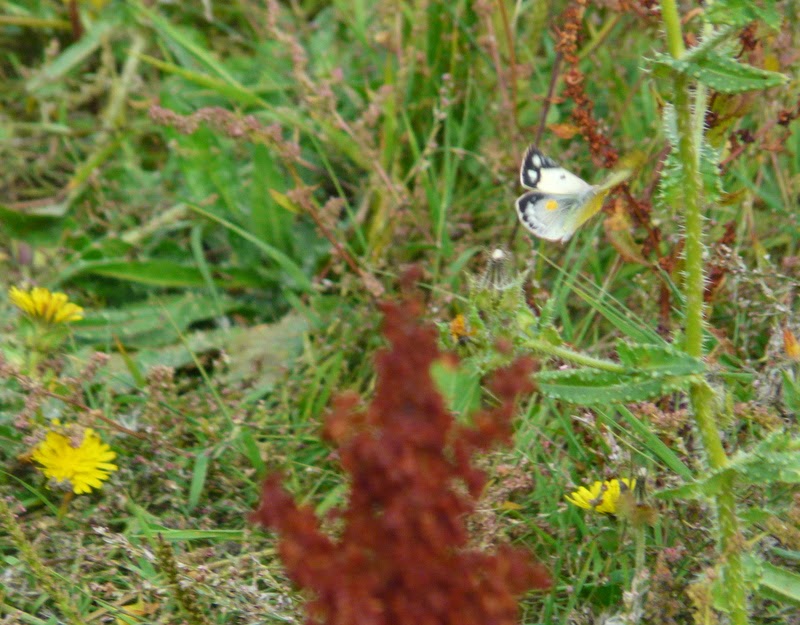Red-breasted Flycatcher
Derek and I covered a good section of the patch this morning but I had to leave at nine for football and Derek had to pack it in too. This afternoon, with Lu and the kids all busy doing various things, I was able to get out again, eager to see what was left over from the early morning fall that Derek and I experienced. At around 1435 I was walking quietly along the hedgerow that borders the Bristol Schools Camp when a movement caught my eye. I raised my bins and found myself staring at a beautiful red-breasted flycatcher. This species was firmly on my radar, with larger than usual numbers having appeared on the east coast in the last few days, but it was still a bit of a shock. I took the photos shown below and then beat a hasty retreat so that it could feed in peace. This seemed to work as the bird stayed feeding along a short stretch of hedgerow, often getting in a couple of sycamores, until at least 1715, though I had to leave before then. I heard it call its wren-like rattle when I first picked it up and looked at it hard to make sure it wasn't the much rarer, faster calling taiga flycatcher, but with buffy underparts it never really caused any alarm. It was often very elusive, remaining motionless for long periods, mostly out of sight but I think a fair few people managed to see it. The presence of several chiffchaff in the same trees added to the difficulty in picking the bird up. Totals from today then, in order of appearance: c30/40+ chiffchaff (a sizeable influx for Orcombe and probably a conservative estimate), 1 lesser whitethroat (first record this year!), 4+ blackcap, 3+ grey wagtail, 3+ jay, 1 spotted flycatcher, 3 stonechat, 1 greenshank, 7+ yellow wagtail, 2+ alba wagtail, 1 goldcrest, c50/60+ meadow pipit, 1 great spotted woodpecker, 1 red-breasted flycatcher and 1 wheatear.

My first view of the R-b Fly, tucked away in the hedgerow.
The bird was most often seen in the two golden sycamores - left of the picture. The gate leads into the Bristol Schools Camp which is a private site. I have permission to walk around it when it's not being used and it has great potential because the habitat is fantastic and it's completely undisturbed.
High-flying Jay - always good to get in the autumn.
Early morning Spotted Flycatcher - later 'trumped' by its much rarer cousin. I still haven't had pied fly this autumn or, for that matter, redstart.
Yellow Wagtail























































